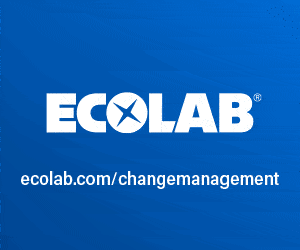In George Orwell’s 1984, he conceives a futuristic dystopia wherein Big Brother watches over every citizen. Although his concept of constant surveillance of the population is an unwelcome thought, there are situations when an increased level of monitoring can lead to incredible benefits.
Here Yonatan Hyatt, CTO of autonomous machine vision expert, Inspekto, explores the concept of total QA and the technology that has made it possible.
Total QA means performing quality assurance activity at every stage on the production line. Although it sounds too good to be true, the development of autonomous machine vision as an affordable, flexible and integrator-less technology means that total QA is now a reality.
Out with the old
Traditionally, QA managers have only been able to install machine vision solutions at major junctions on the production line, because they are tailored, expensive and expert dependent.
A traditional visual QA solution is custom built for a specific location as part of a complex project, which is orchestrated by the integrator.
The manufacturer would rely on an external systems integrator for the entire lifespan of the project, as the skillset required makes the QA project completely inaccessible to the plant’s own staff.
Because installing inflexible, traditional solutions for one point on the production line is so time consuming and expensive, manufacturers have typically opted to benefit from machine vision only at major junctions.
Although this allows the business to identify defective products before they reach the customer, protecting their reputation, it does not allow manufacturers to protect themselves against unnecessary scrap.
Total QA allows QA managers to remove a product from the production line as soon as it becomes defective, meaning that no additional time and cost is put into further production, only for it to be scrapped at the end of the line.
The inherent limitations of traditional machine vision also mean that the QA manager is held back from collecting the amount of data required for plant optimisation.
In with the new
The advent of autonomous machine vision has opened the doors to total QA. One reason for this is that the systems are available at one tenth of the cost of a traditional solution.
Autonomous machine vision systems can also be installed by the plant’s own personnel in minutes, rather than weeks or months. Additionally, if the QA manager chooses to move the system to another location, it can quickly self-adapt — unlike an inflexible, traditional solution.
The integrator-less deployment and reduction in cost means that manufacturers are no longer limited to visual QA only at major junctions. Rather, they can install visual QA at any point they feel necessary.
As well as finding the defects themselves, manufacturers can do root cause analysis to find out why they were introduced.
A manufacturer operating using total QA can trace through archived data to identify which equipment is the source of the problem and then take steps to correct it.
By optimising the plant in this manner, the QA manager can prevent defects from being introduced in the future. If a manufacturer only has visual QA at major junctions, this is not possible. The manufacturer does not have the complete picture required to optimise their line and avoidable defects will continue to be introduced.
Although surveillance of our day to day activities, like that of Big Brother in Orwell’s 1984, is something best kept in fiction, increased visual QA of our manufacturing lines is not.
Enabled by autonomous machine vision, total QA is now a reality — allowing plants to reduce scrap, improve yield and optimise their lines.




